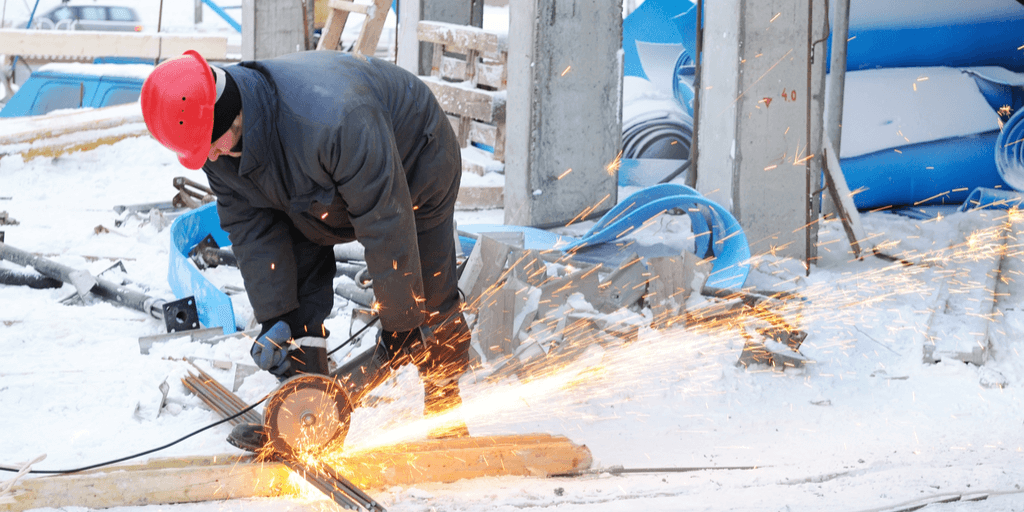In light of last week’s polar vortex in the US, worker safety concerns have come to the forefront. In the construction industry, where deadlines are strict and the demand is high, extreme weather conditions may not phase some project managers.
While working in the -70ºF temperatures that swept parts of the Midwest last week is out of the question, that doesn’t stop project managers from demanding attendance in more tolerable, albeit still sub-zero, temperatures.
So, when should workers report to the jobsite during frigid winters? And what measures should they take to prevent frostbite or hypothermia?
Putting Your Foot Down
During last week’s record-breaking polar vortex, government agencies were advising people to not stay outside for longer than two minutes. If you are scheduled to report to an outdoor construction project during a government advisory, you are entitled to exercise your rights.
Most project managers won’t want to risk an OSHA investigation or workers’ comp case for a few hours’ worth of progress. OSHA standards generally advise that when temperatures hit -30º to -34ºF or below with more than 10-20 mph winds, nonemergency construction work should cease. A table with these temperature and windchill standards can be viewed on their website.
Construction workers should keep this table handy, particularly during rough weather events like blizzards and polar vortexes.
Taking Necessary Precautions
Any temperatures below zero, particularly where a windchill is involved, should be taken seriously. If required to work, constructions workers must take the following precautions—and managers should enforce them:
- Wear the right gear. Lined hard hats, thermal-lined gloves, waterproof boots, layered socks, and fleece-lined bomber jackets are absolutely necessary. Frostbite almost always begins at the extremities, so keeping these parts warm is crucial. Everyone is vulnerable to cold stress, and it can occur in temperatures as low as 50ºF.
- Monitor & prioritize work. In extreme cold, surfaces will be icy. It’s important to note and label icy areas, and avoid work on rooftops or upper levels in these conditions. Otherwise, workers are vulnerable to slips and falls, which could be deadly from an elevated surface.
- Encourage teamwork. The “buddy system” is something most of us were taught in primary school, and is relevant throughout our entire lives. Working in pairs on the construction site will allow workers to tackle cold hazards together, and make note of one another’s weakening condition should any form of cold stress set in.
- Encourage frequent breaks. Once temperatures hit below -25ºF and winds are present, the maximum work periods become shorter. The American Conference of Governmental Industrial Hygienists recommends more frequent breaks, with anywhere between 30-75 minute intervals between breaks. Workers should use these breaks to rest, warm up, and change out of any wet clothing.
- Schedule work accordingly. OSHA suggests scheduling work for the afternoon during periods of extreme cold. This is when the winds are most likely to ease up, and temperatures are most likely to be warmer.
Knowing the Risks
There are three kinds of cold stress that can occur. Having the proper gear, taking frequent breaks, and avoiding work during peak temperature drops can prevent against these. Nonetheless, it’s still important to know the signs:
- Hypothermia: This occurs when your body temperature drops below 95ºF. Symptoms will include uncontrollable shivering, loss of coordination, confusion, slurred speech, blurred vision, and slowed heart rate.
- Frostbite: This happens primarily in extremities (fingers, toes, nose, ears). Symptoms include tingling, numbness, redness, or blistering in these regions.
- Trench foot: Temperatures don’t necessarily have to be freezing for this to occur. When feet are exposed to cold and wetness, they will turn red, go numb, swell, and tingle. These are signs you may be suffering from trench foot. Remove wet footwear and warm up your feet right away.
Awareness and preparedness are half the work of enduring construction work in cold temperatures. Nonetheless, know when it’s okay to tell your employer “No.” If you are being forced to work in significantly freezing temperatures, approach your employer with the necessary OSHA resources.
Chances are, if temperatures are reaching record lows, construction work should come to a screeching halt.
Ellie Batchiyska is a writer for Advance Online, the first web-based training provider to be accepted by the OSHA Outreach Program for DOL OSHA completion cards.
